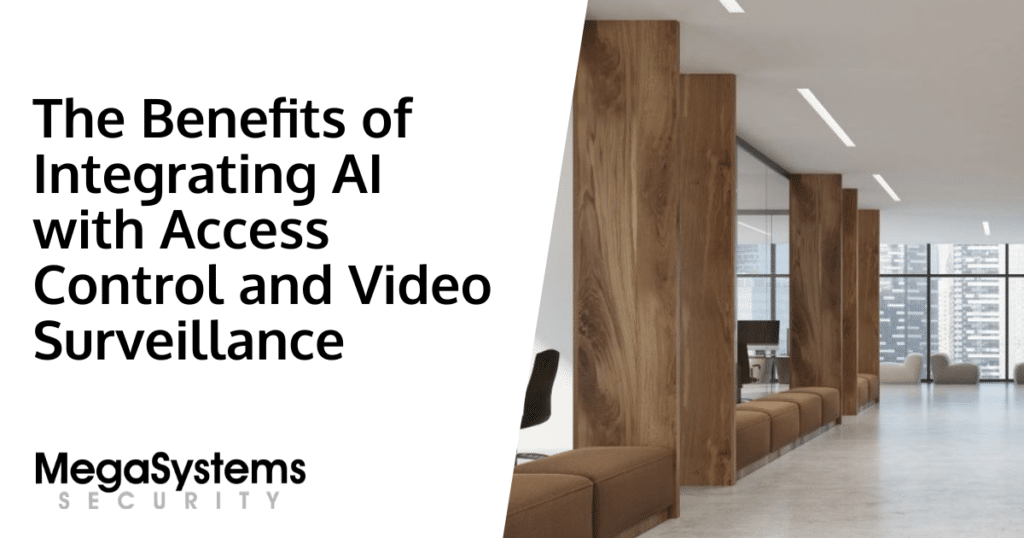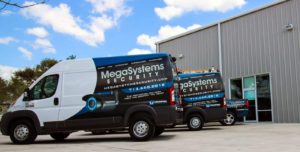Introduction to AI-Driven Access Control and Video Surveillance
In today’s ever-evolving landscape, integrating artificial intelligence (AI) with access control and video surveillance has become a critical advancement for businesses and institutions alike. This integration provides enhanced operational efficiency, increased protection, and sophisticated data analysis that bolsters decisions. The trend in recent years has seen AI merging with traditional security elements to create a smarter framework that can predict, analyze, and react to potential threats. For instance, many companies in houston, tx are now prioritizing these innovative security solutions to ensure that every installation, whether in a commercial or residential setting, meets the highest standards of safety. In these systems, every camera and sensor is connected to create an intertwined network that continuously monitors and responds to anomalies without human delay.
Understanding the Intersection of AI and Access Control
This transformative approach combines AI’s ability to learn from vast data inputs with access control’s precision in managing who enters a physical space. The integration allows systems to verify identities, detect unusual patterns, and even adjust access permissions on the fly. Here, the benefits are multifaceted: enhanced reliability, scalability of operations, and a proactive stance toward emerging risks. These intelligent solutions work by constantly monitoring various entry pathways using a state-of-the-art camera and sensor setups, ensuring that every point of ingress is scanned and analyzed in real time. The system can recognize authorized personnel while flagging any unauthorized access attempts, thus ensuring robust security.
Features and Benefits at a Glance
One core feature is the automation of access verification using biometric data or facial recognition models. For example, an installation in a commercial facility or a municipal building can integrate such an AI-powered access control solution. This smart system reduces human error and administrative overhead, ensuring that no security lapse goes unnoticed. Not only does the system offer immediate threat detection, but it also records, stores, and analyzes each event, providing a seamless history of events that is invaluable during a security audit.
Another significant benefit is the cost-effectiveness over time. The initial investment may be higher, but long-term savings are realized by decreasing labor expenses and reducing instances of theft or security breaches. In addition, these systems provide real-time alerts, thereby enabling quick intervention actions that minimize potential damages.
Detailed Exploration of Integrated Video Surveillance
Video surveillance, when coupled with AI, evolves from a passive recording device into an active monitoring apparatus. The deployment of multiple cameras throughout a facility augments the overall situational awareness. Every camera, whether strategically placed around an office complex or installed within a remote industrial facility, contributes to the granular observation of every activity. In a modern city like houston, tx, where urban complexity is continuously growing, these integrated systems are essential for maintaining both public and private safety.
Moreover, a robust surveillance network supports law enforcement and emergency responders during incidents. This system uses pattern recognition to identify unusual behavior and automatically alerts the concerned teams. The precision of the AI algorithm ensures that notifications are accurate and essential, eliminating the false alarms that are common with older technologies.
Assessing the Security and System Integrity
Security remains the integral aspect of any modern infrastructure, and as the sophistication of threats increases, so too must the intelligence behind our protective measures. These AI-integrated systems can dynamically adapt to evolving risk landscapes, ensuring uninterrupted security. By processing massive amounts of data in real time, the systems pinpoint subtle irregularities that might otherwise be overlooked. Thus, the reliability of a system built with AI is superior to that of traditional, static security mechanisms.
Even during times of high activity, such as during large public events or in commercial settings with heavy foot traffic, the balance between access control and video surveillance ensures that every individual’s journey through entry points is securely managed. The intelligent system resolves potential bottlenecks by differentiating between low-risk and high-risk scenarios, assigning resources accordingly, and even temporarily elevating security levels when necessary.
Technical Advancements and Implementation Strategies
The journey to integrating AI with access control and video surveillance is not only a matter of installing new hardware but also involves ingesting and managing vast amounts of data. Modern installations rely on strong network architectures that support rapid communication between devices. For instance, a dedicated installation team may design a system where a camera sends data directly to a centralized processing node, which then runs the AI algorithms to analyze the feed.
This technical synergy allows commercial facilities to operate with minimal manual oversight. Every component, from the installation phase to real-time operations, is orchestrated to ensure that the overall network of systems functions optimally. In practical terms, even a single system failure is mitigated by redundant protocols that instantly initiate backup routines. Additionally, system updates and maintenance are performed as part of a proactive strategy to guarantee that the latest AI developments are integrated into current infrastructure without downtime.
DIY Versus Professional Installation
While some may consider a DIY approach when integrating AI with access control and video surveillance, professionals emphasize the importance of comprehensive installation and professional configuration, particularly in environments where uncompromised security is vital. A professional installation not only ensures that every device is correctly connected but also helps in tuning the AI’s detection thresholds to minimize false positives. In environments like houston, tx, where the conditions might vary unexpectedly, professional guidance ensures that the system adapts to both indoor and outdoor scenarios effectively. This means that the camera placement, network security protocols, and even the integration with other security measures are fine-tuned for optimal performance.
In scenarios ranging from high-end commercial buildings to community institutions, leveraging professional expertise allows for a robust and scalable solution. These systems, when installed by experts, deliver a higher standard of reliability and responsiveness that DIY methods may lack. Professionals bring attention to detail that ensures each component is precisely calibrated, with backup systems integrated to address any common challenges such as connectivity issues or environmental interferences.
Trends, Challenges, and Future Outlook
The current trends in this technology indicate a growing shift toward fully automated systems that recognize patterns and predict security breaches before they occur. With every passing day, the capabilities of AI continue to expand, enhancing everything from the clarity of surveillance footage to the preciseness of access control. One current trend is the development of more nuanced and adaptable systems that can distinguish between harmless events and true security threats. This level of sophistication is made possible through continuous learning and updates, which adapt according to the accumulation of historical data.
Nonetheless, the integration process is not without its challenges. Organizations must confront common obstacles such as maintaining data privacy, ensuring robust resistance to cyber-attacks, and managing the complexities of integrating legacy infrastructure with new technology. Despite these challenges, the momentum toward more intelligent surveillance systems continues, driven by increasing demand for operational excellence and genuine protection.
Looking ahead, we can expect more breakthroughs in AI algorithms that further refine access control and surveillance capabilities. Innovations will likely emphasize even greater integration among various devices that compose a security network. Consequently, the future will see systems evolving to become more autonomous while retaining the human touch necessary for critical decision-making during unprecedented events.
Practical Insights and Strategies for Implementation
An effective strategy begins with a thorough site evaluation, followed by planning a design that incorporates both AI and traditional security elements. First, the planning phase focuses on understanding the specific needs of a facility, whether it is for a commercial building, a manufacturing plant, or even a municipal establishment in houston, tx. In this phase, the installation plan includes the optimal placement of cameras, the best network configuration, and the security protocols that will work together seamlessly to protect the premises.
Next, the deployment of the installation involves configuring the hardware and software in unison. Each component of the system is integrated so that from the initial signal captured by the camera to the final decision made by the AI, there is absolute synchronization. Although some key factors may require continuous adjustments, the overall goal is to tailor each installation to the unique environmental conditions and operational requirements of the facility. Moreover, periodic evaluations and system updates are essential, as they help the system adapt to the latest threats and technological enhancements.
For organizations implementing DIY vs. professional-installed solutions, it is crucial to consider available resources and long-term maintenance plans. The decision involves evaluating how much expertise is available on-site, the critical nature of the assets being protected, and the cost implications of professional services compared to self-installation. An informed choice in this regard ensures that the system not only meets but exceeds the required security standards.
Conclusion
Integrating AI with access control and video surveillance delivers a transformative approach that enhances both the reliability and proactive nature of modern security systems. The key lies in combining advanced technology with proven security approaches to develop a holistic solution that adapts dynamically to evolving challenges. Whether in a commercial setting, within residential areas, or even as part of large-scale municipal infrastructure like that seen in houston, tx, every step of the integration—from the meticulous installation of cameras to the continuous monitoring by AI—is designed to maximize protection while minimizing vulnerabilities.
Ultimately, the strategic integration of these elements leads to a more secure, efficient, and informed operation that is resilient against both traditional and emerging threats. Over time, as artificial intelligence continues to evolve, its role within access control and video surveillance will only become more indispensable, heralding an era where security is not only about protection but also about smart, informed vigilance in every facet of our daily operations.


